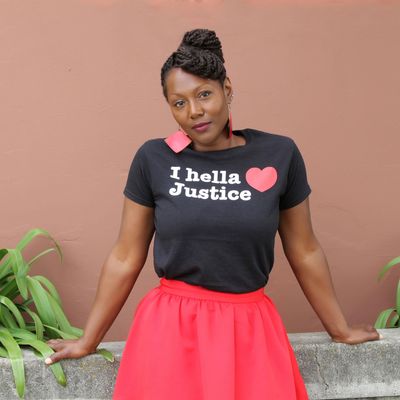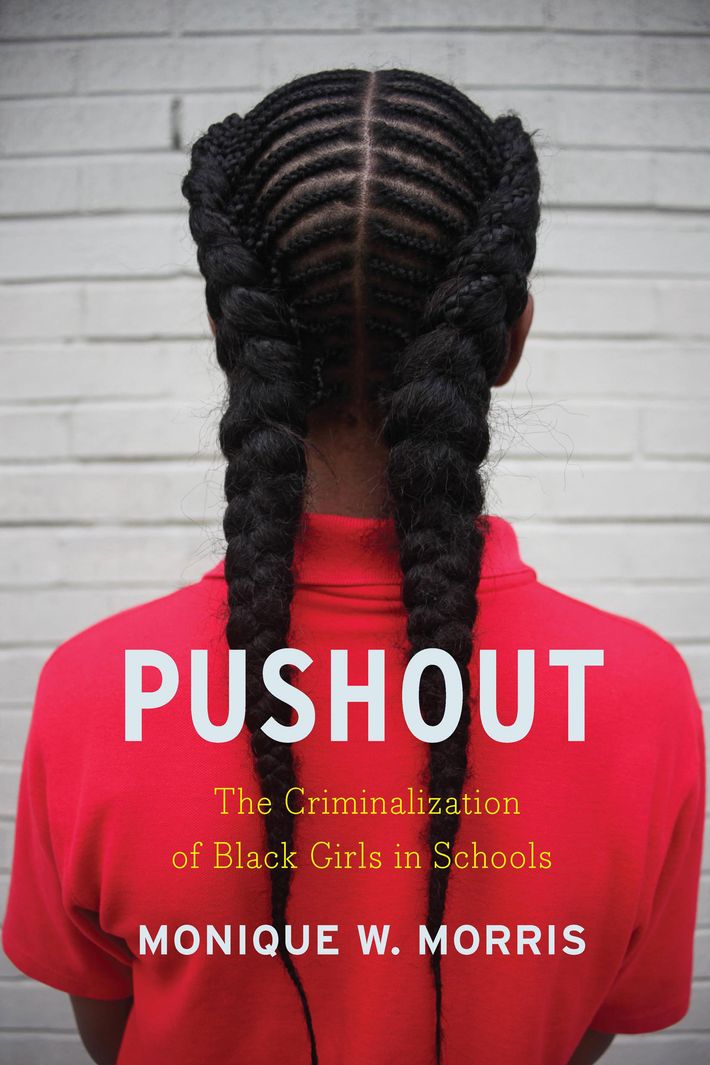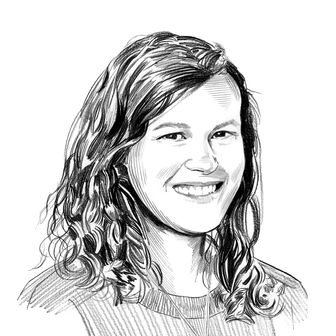
Black girls represent 16 percent of the female student population in the U.S. — but more than a third of those who have been arrested in school. And the discipline disparity starts early: Black girls as young as 6 have been arrested by law-enforcement officers in their classrooms for throwing tantrums and yelling at teachers. In her new book, Pushout: The Criminalization of Black Girls in Schools, Monique W. Morris — the co-founder of the National Black Women’s Justice Institute, who has worked in education, civil rights, and social justice for more than two decades — explores how black girls are driven out of American schools.

Morris has been working on Pushout since she published Too Beautiful for Words in 2001 — a novel written from the perspective of a pimp, a sex worker, their son, and a female Black Panther — which became popular among girls in detention facilities. “Writing that street novel really paved the way for me to explore this issue more deeply,” Morris says. “Much of the conversation about the school-to-prison pipeline was really anchored in the experience of boys and young men. As I was watching girls come in and out of juvenile detention facilities, it was really important for me to explore what was causing the disparity, and how it might look different from the experiences of boys.”
Morris spent four years speaking with black girls about their experiences in traditional and alternative high schools, as well as schools in juvenile detention centers across the country. In Pushout, she documents factors from the prevalence of zero-tolerance policies and exclusionary punishment to racial bias. The Cut spoke with Morris about the ways pervasive stereotypes about black femininity negatively shape the educational experience of black girls.
We know there’s a major discipline disparity for black girls in school. What do you see as the driving factors behind that?
It’s really a convergence of policies, practices, and a prevailing consciousness that has both sexualized and rendered the identities of black girls and young women problematic or invisible. As a result, we often fail to read and respond to the behavior of black girls in ways that are consistent with their intentions. Anecdotally, girls tell me they’re experiencing school pushout when they ask questions in class, when they fall asleep in class, when they curse, when they wear hats in the hallways, when they fail to produce ID. These are minor ways in which girls are breaking rules — not infractions that should push them out of school. Even when girls do get into a fight, the response is usually removal from school, rather than a discussion about how to repair the harm and relationships so that it doesn’t happen again. If we don’t teach our young people how to resolve the conflict, then it just continues.
How do distorted stereotypes about black femininity affect the experiences of black girls in school?
In the book, I describe the ways black feminine identity is deposited into different stereotypical “buckets” — like being “sassy” or “loud” or “hypersexual” or “conniving” — which makes adults more likely to read black girls’ behaviors as in alignment with those constructs. So when black girls come to school in short shorts on a hot day, and administrators see their shorts as sexual, but they don’t see the shorts of their white or Asian counterparts as sexual, then those girls feel like their bodies are being policed in a way that doesn’t make them feel comfortable in school. And sometimes the schools send the girls home — so they actually say, “You can’t be here in those clothes.” The girls internalize that differential treatment, and it leaves them with a feeling of inferiority. Girls respond differently, but ultimately, when you feel that your body is being policed and there are policies in place that uniquely impact you, that’s not a good feeling.
Girls who are the most distracted, who are labeled “disruptive” and repeatedly engage in behavior that makes schools and educators very agitated, are typically girls who are experiencing trauma and victimization, and are acting out as a way to deal with the oppression they are facing. Given the deep historical legacy of racialized gender stereotypes that affect black women and girls, sometimes adults fail to acknowledge that — and so girls are seen as just having an attitude, or being intentionally disruptive or defiant, as opposed to responding to their conditions.
In the book, you mention that some schools explicitly ban hairstyles like dreadlocks, braids, and Afros.
That’s one of the most overt situations where girls of African descent are uniquely targeted. The justification is rooted, I think, in deeply internalized impressions about what is professional, and what is a “good” hairstyle. Girls come to school with Afros — that’s how their hair grows out. Girls come to school in braids and locs. These are styles that at least have origins in African traditions. Recently, there was a group of girls in North Carolina who were threatened with suspension for wearing head wraps for Black History Month. Dress codes have to be reevaluated, and I think at a bare minimum it’s appropriate to remove all language that unfairly targets and disproportionately impacts a particular group of students, especially when it’s associated with expressions of cultural identity.
You write about the ways that black girls are granted “permission to fail” based on implicit biases from teachers. What does that look like in practice?
Permission to fail is about accepting the idea that black girls will not perform at the same level as their peers. Or that they don’t show up to learn, or they are somehow giving an attitude that doesn’t make them competitive scholars and learners in class. So one example is a girl who is not willingly participating in the activity. If the teacher says, “Okay, you don’t have to do it today,” the child accepts that as a way to get out of doing the assignment. But there’s a failure on the part of the educator to really find a connection with that child so she does do the work and can be competitive in a way that will benefit her in the future.
I don’t think teachers intentionally set out to do this. The reason I talk about implicit bias so much in the book is that I believe that all of us are informed by implicit associations — which are often at odds with what we profess. I believe that educators are committed to learning, and they get into teaching because they care about education. But we’re still impacted by these ideas that play out in how we respond to student behaviors, and how we respond to the parents of these students. Those are things we still need to work through and address, and the only way to deal with implicit bias is to address the bias. It’s really about developing material and training opportunities that allow administrators and teachers to connect with students in different ways, and students to connect with each other in different ways.
In the book, you discuss public schools’ increased reliance on exclusionary discipline — suspensions and expulsions. Why have these approaches to punishment become more dominant in recent years?
There was a lot of rhetoric that came out of the early and mid-1990s that led to a new prevailing consciousness about how we respond to young people who are at risk of being in contact with the criminal and juvenile legal systems. Schools, in many ways, took on this idea that you could implement safety by having security guards on campus, and metal detectors and cameras. And we believe that increased surveillance keeps us safer, but what I’m challenging is that you can’t really implement safety. It has to be co-constructed. In Pushout, I’m making an appeal for us to reconsider the ways we have rendered certain children as more prone to violence and crime, and not provided them with the same opportunities for redemption and righting wrongs that are provided in other learning environments.
You also write that schools in juvenile detention centers fail because they don’t serve to repair girls’ relationships with their schools. What do you mean by that?
When we talk about the school-to-prison pipeline, we fail to acknowledge that, for a growing number of our children, the schools in the facilities are part of their educational continuum. For girls, my research has shown that the punishment doesn’t end with confinement. The punishment increases in confinement — which provides an additional barrier to them being able to repair their relationships with schools. I believe a core function that the juvenile detention schools can serve is helping girls to understand what a school can do for them. Girls without an education tend to get in trouble with the law more frequently than their counterparts with an education. So I want to encourage schools in detention facilities to increase their rigor and really engage with the girls. Because the population we’re talking about is the girls who are at the highest risk of continual school pushout, which then places them at risk of continued, repeated involvement with the juvenile and criminal legal system. It’s a really hard thing to do, but it absolutely must be done.
This interview has been edited and condensed.





